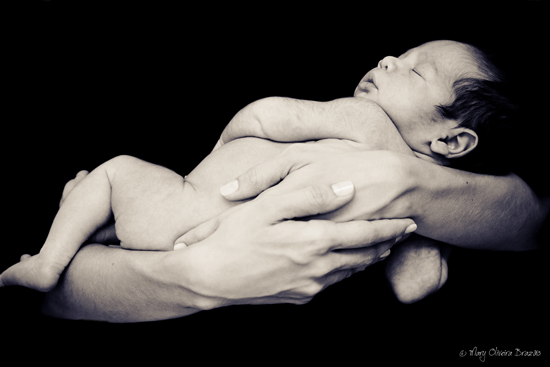The Impact of Fertility Treatments on Women, Children
SPH Partnership to examine long-term health outcomes

Photo by Mari Oliveira
A partnership forged during a cab ride has resulted in a $6.6 million research collaboration that BU School of Public Health childbirth experts hope will shed light on how assisted reproductive technology (ART) influences health outcomes for women and children.
The collaboration—termed the Massachusetts Outcomes Study of Assisted Reproductive Technologies (MOSART)—dates back to 2006, when Gene Declercq, an SPH professor of community health sciences, and Barbara Luke, a reproductive epidemiologist at Michigan State University and a research consultant to the Society for Assisted Reproductive Technologies (SART), were serving together on a federal review committee.
As they shared a cab to the airport after a meeting, Luke described the challenges SART faced in studying long-term health outcomes associated with in vitro fertilization—the most common ART treatment.
Declercq is one of the founders of a Massachusetts database—dubbed PELL— that contains all Massachusetts birth certificates and fetal death and hospital discharge records since 1998. The longitudinally linked data allow researchers to follow children from birth through early childhood. SART, meanwhile, collects detailed clinical data on assisted reproduction from clinics across the country, including seven in Massachusetts.
As they talked, Luke and Declercq realized that if they could merge their two data sets, it would be possible to develop the most comprehensive study of ART outcomes yet devised.
Six years later they are putting those pieces together, thanks to a five-year grant from the National Institutes of Health’s National Institute of Child Health and Development. The MOSART research team now spans six institutions, and it has begun an in-depth investigation of how in vitro fertilization procedures affect health outcomes for women and children.
“It’s an extraordinary partnership that brings a lot of people, and a lot of knowledge, to the table,” Luke says.
Prior studies have shown that ART increases the risk of pre-term delivery, low birth weight, and birth defects, but it remains unclear whether these outcomes are related to the incidence of multiple pregnancies, the older average age of mothers, or infertility factors unrelated to ART procedure.

“The tricky thing is, ART is bound up with a lot of other issues,” says Declercq. “We’re not just looking at a yes or no as to whether ART increases risk. If there are risks, we want to know what they are, what causes them—and is there something that can be done better? Maybe there are some treatments that need to be changed, or some that have fewer risks.”
Luke says being able to link the SART data with hospitalization records is a “huge step forward.”
Besides BUSPH and Michigan State, other partners include the Massachusetts Department of Public Health, Dartmouth College, Massachusetts General Hospital, and Brigham and Women’s Hospital.
MOSART has two parts: One will examine health outcomes of children up to age 3 who were conceived using ART; the other will look at long-term outcomes for women who gave birth through ART, compared to women who had infertility issues but did not get pregnant with ART, and women who gave birth through spontaneous conception.
Declercq says the study will break new ground because prior research has “typically lacked a comparison group of women with indicators of subfertility to determine the extent to which poorer outcomes are the result of the ART or the underlying condition which led to the subfertility.” Also, the project will cover multiple clinics, whereas most prior research has focused on a single clinic.
Infertility affects an estimated 12 to 15 percent of women of reproductive age. The use of in vitro fertilization and other fertility-enhancing treatments has risen steadily in the United States, with an estimated 1 to 3 percent of births now involving ART. According to the Centers for Disease Control, more than 154,400 ART cycles were performed at 443 reporting clinics in the United States in 2010, resulting in 47,102 live births (deliveries of one or more living infants) and 61,561 infants.
Massachusetts, which has legislation requiring insurers to cover some of the costs associated with ART, has one of the highest rates of ART in the country—nearly 3 percent.
“Massachusetts is very progressive in its collection of vital statistics data, so it’s a very exciting project to be a part of,” Luke says. “It’s certainly bigger and more comprehensive than anything done before.”
Besides Declercq, other SPH researchers on the project include Candice Belanoff, research assistant professor of community health sciences, and Howard Cabral, professor of biostatistics.
Lisa Chedekel can be reached at chedekel@bu.edu
Comments & Discussion
Boston University moderates comments to facilitate an informed, substantive, civil conversation. Abusive, profane, self-promotional, misleading, incoherent or off-topic comments will be rejected. Moderators are staffed during regular business hours (EST) and can only accept comments written in English. Statistics or facts must include a citation or a link to the citation.